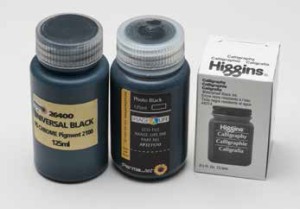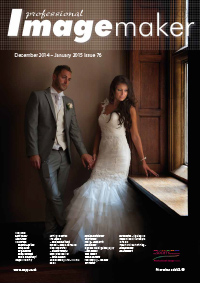articles/Printing/Making-Your-Mark-page1
Making Your Mark - part 1 of 1 2 3 4 5 6 7 8 9 10
by Mike McNamee Published 01/12/2014

The world of art and indeed the world of high-value photographs is obsessed with 'provenance' - where the piece has come from. Many tens of thousands of pounds can be spent establishing who made a piece of art and if some respected expert deems it to be by a famous artist then the value can increase by almost bewildering amounts. Signing work is therefore important; it provides a starting point in the case of dispute - if the signature says Picasso then you have to prove things about Picasso and make the links!
Now it has to be recognised that most photographic prints do not carry such weighty matters around with them. However, as photographs become more mainstream in the auction rooms then provenance starts to matter. Signing work then becomes important but with that comes the realisation that the signature has to last as least as long as the print. Either way a signature adds gravitas to a print.

Adding Your Mark
The first thing to decide is what your mark is to be. Today it is recommended by many that you should not add your legal signature to a piece of work that will go for public display. By legal signature we mean the one you use on your cheques and in Sainsbury's! It is regarded as too simple for anybody with bad intentions to whip out a smart phone and obtain an exact replica of your signature for fraudulent use. With your signature, your name and place of living from the exhibition catalogue (and perhaps some biographical details) the identity snatchers are well on their way!
The other reason for using a different signature might be that your legal signature is a mess! The writer's is - it has never recovered from his days as a company director when signing cheques 200-300 at a time was a regular chore - such activities eventually reduce your mark to a scrawling line! No - for a print, something stylish is required and so you should work at it and generate a new one, preferably with a bit of style. A broad-nibbed pen will add more style and these are discussed later. Normally this 'special' signature is known as your 'autograph' although in this feature we are using signature to cover the term.
Additionally you may wish to add an embossed stamp to your print and today, even a hologram - this too is discussed later. There is also the position of the autograph on the print to be decided. Convention says that the edition number goes on the left, below the image (but on the actual print), the title sits in the middle and the signature and date go on the right, again on the printed surface's border. If used, an embossing stamp might also be applied close to the signature.
You are currently on page 1
- Making Your Mark page 1
- Making Your Mark page 2
- Making Your Mark page 3
- Making Your Mark page 4
- Making Your Mark page 5
- Making Your Mark page 6
- Making Your Mark page 7
- Making Your Mark page 8
- Making Your Mark page 9
- Making Your Mark page 10
1st Published 01/12/2014
last update 09/12/2022 14:56:20
More Printing Articles
There are 31 days to get ready for The Society of Photographers Convention and Trade Show at The Novotel London West, Hammersmith ...
which starts on Wednesday 14th January 2026





